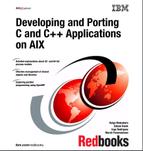7.2. Using the printf()-debug method
The printf()-debug method is easy to understand and is still the most common method used to debug applications. To use the method, define the following macro in your codes:
#if !defined(DEBUG)
#define DBGMSG(MSGSTR) ((void)0)
#else
#define DBGMSG(MSGSTR) {
fprintf(stderr,"In %s() at line %d in file %s: %s"
, __FUNCTION__, __LINE__, __FILE__, (MSGSTR));
}
#endif
then call this macro where you would like to print messages, for example:
int main(int argc, char *argv[])
{
DBGMSG("Hi there!
");
exit(0);
}
If you compile the source code with the -DDEBUG compiler option,then it will print a debug message very similar to the following line:
In main() at line 16 in file printf-debug.c: Hi there!
Although it is a very commonly used method in the early development cycle, it has the following disadvantages:
You may need to recompile your source code every time you want to insert new printf()-debug lines.
Debugging multi-threaded applications with the printf()-debug method is not trivial.
Because it may cause many calls to printf(), the application performance get degraded in most cases.
If you insert the DBGMSG macro too many times, it can be hard to trace the huge quantity of debug messages.
Function-like macros introduced by C99 are very useful when defining the debug macro (see “Function-like macros with variable arguments” on page 9).
